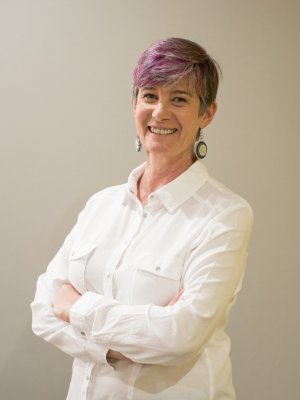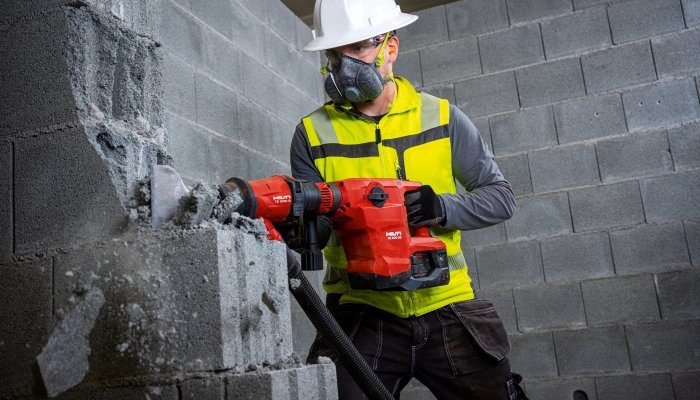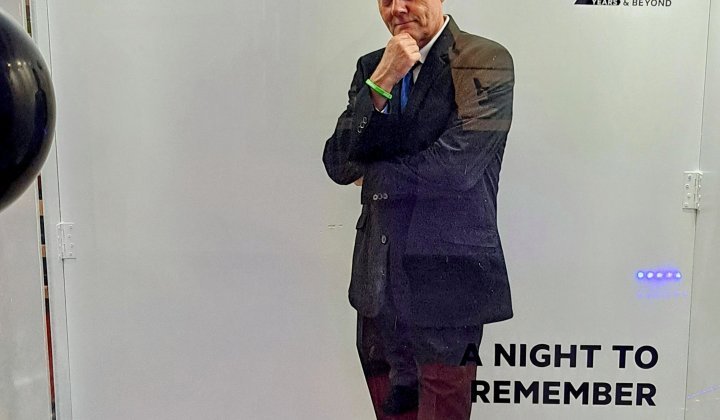“Innovation is the production of something that is useful, that will help to improve the lives of people,” says Terry Behan, GIBS faculty and executive head of design at Nedbank. “That might be a product, a service, or even a feature. Innovation at the moment, and certainly in South Africa, is very focused on this idea of changing the product – making a better ‘thing’. Sometimes that's not the real problem to solve. Sometimes innovation needs to come into the business model – in other words, how you take that product to market.”
He gives the example of Peloton, the company selling stationary bicycles for home exercise, which disrupted the market by focusing on the end-user experience. “They realised it's lonely just cycling by yourself at home and shifted into the content space,” he explains. Peloton launched Internet-connected stationary bicycles (and later treadmills) that enable subscribers to remotely participate in classes with other Peloton members via streaming media. As a result, they moved from an exercise equipment company to a media company, with minimum changes to the core product, resulting in a 10-fold increase in company valuation.
Another example Behan uses is Hilti, the tool manufacturer. In the early 2000s, the company pivoted its business model from product-focused to service focused. Whereas the company had previously sold tools, it moved to offer product-as-a-service. The physical product (the Hilti tool) didn’t change, but the way it was consumed in the market did. Instead of buying the tool to create the hole in the wall, customers were buying the ability to create the hole in the wall. This, says Behan, was a simple change to the business model that saw Hilti thrive and grow when the construction industry was experiencing a rapid decline following the 2009 crash.
“You can't just build a good product nowadays. Chances are, it's already been done, or there are many viable competitors. You must not just innovate on product; you also have to innovate on the business model first to grasp the imagination of the market, and also to really provide your consumers with something different to what they've had before,” says Behan. “We can apply that to social innovation, too.”
He is currently grappling with these challenges in his own social impact work with his start-up, Ayara, which aims to provide 100 million students with the necessary foundational skills to thrive in the future irrespective of their economic circumstances.
“The core problem we're trying to solve is that our educational system was designed in the 1860s to take people out of the agrarian era into the industrial era, which it did successfully. But it really isn't fit for purpose anymore. The skills of the future are based on something called the ‘four Cs’: communication, critical thinking, collaboration, and creativity,” he says. “Our results tell us we have built a great product, but now we need to solve the business model, which we have not successfully done yet. That’s what innovation is: a combination of a good product packaged in a good business model that gives you some chance at scale and market.”
Behan teaches this framework at GIBS within the executive and MBA programmes. “We get the MBA students to use Ayara in their design innovation segments of their programme. They are tasked with solving one of the SDGs by applying a very simple design process and some business model innovation as well.”
He believes design is a toolkit that helps bring innovation to life and runs the same exercise with high school students. He says they tend to develop a wider range of possible solutions quicker than most MBA students, as they are unencumbered by some of the biases of mid-career professionals.
SDGs as a starting point
Behan suggests that cultivating innovation requires two ingredients: empathy and excellence.
“It’s not about simply empathising with the individual, but about looking into society with empathy and asking, ‘Where are the greatest needs?’ And the best framework for that that I've seen is the Sustainable Development Goals,” says Behan. “They provide granular levels of detail and a very clear opportunity to innovate or point you in the right direction where opportunity space exists. There's a US$2.3 trillion investment gap in the SDGs in emerging markets every year. That tells us that it's worth investing in solving these problems – it’s commercially viable. It will create a sustainable economy in the longer term, and that’s really worth exploring. You can't be a successful company in an unsuccessful society.”
Coupled with empathy, innovation requires excellence. “You need a good solid design toolkit to be able to go and solve particular problems,” says Behan. “And we provide that in partnership with GIBS for free through Ayara to anybody who wants it anywhere in the world.”
Behan’s plea to organisations is to recognise the opportunity that the SDGs offer, specifically, from an African perspective. “For example, the median age across the African content is approximately 17. Consequently, about half a billion people are 17 or younger. Now think about it this way: half a billion uneducated people is a huge problem. Half a billion educated people, on the other hand, is a massive opportunity for growth. We need to frame up the opportunity in such binary terms to see where the problem space is, and thus where opportunities for innovation exist.”
Examples of non-technological innovation
Wood you look at that!
The Paper Manufacturers Association of South Africa (PAMSA), its members and its university partners are exploring the commercial potential of a range of products from the pulping and papermaking process, maximising product yield from each and every tree harvested and supporting a circular economy.
Jane Molony, PAMSA executive director, explains that commercially farmed trees are essentially crops planted and replanted in rotations, with only about 9% of the total tree count being harvested in any given year. “This means that there are always trees growing, at different stages of maturity, and these trees are all absorbing carbon dioxide (CO2) and storing the carbon,” she says. “With trees capturing more carbon from the atmosphere than any other biome, they offer a means to mitigate the impact of climate change.”
The forest and forest product sector invests significantly in lignocellulosic research and innovation (using lignin and cellulose from wood). Dissolving wood pulp is a purified cellulose pulp suitable for subsequent chemical conversion into various products. Cellulose — the most common biopolymer on earth — is the structural component of the cell walls of plants. Dissolving wood pulp can be spun into textile fibres for viscose production, cast into a film or regenerated into a sponge, providing a renewable alternative to fossil fuel-based plastics and synthetics.
With its highly versatile properties, cellulose can also be used to make surgical gels and screens on electronic devices or act as a food-safe emulsifier in low-fat yoghurts and cheese. Microcrystalline cellulose is a component in pharmaceuticals, acting as a carrier for active ingredients and used in confection.
Lignin, the glue that holds wood and plant fibres together, is also promising. Removed during the pulping process when manufacturing fine paper to prevent yellowing with age, some 50 million tonnes are produced worldwide each year.
Lignosulphonates are currently used in mining and road maintenance as a dust suppressant and added to ready-mix concrete to improve the flow of concrete and reduce the water required without compromising on strength.
Lignin is currently being investigated as a multi-functional and renewable alternative to petroleum-derived styrene plastics and foams.
Innovation, pegged
Increda-Peg, designed to be affordable, durable and multi-functional, is a simple but effective local product innovation. Unlike conventional modern laundry pegs with a spring that often pops out of place, the Increda-Peg is a single piece of recycled plastic with a smart design for pull-on and twist-off functionality.
The peg slips onto the washing line and locks into place. While it was designed primarily for hanging washing to dry, it can be used in other applications where you’d use a conventional peg, such as sealing bags or clipping items together. Customers have also been putting it to use to hang scarves or belts from wire coat-hangers or camping lanterns from guy ropes, among other things.
With an extra hook in the front, the Increda-Peg allows users to hang an additional item from the peg while in use, which helps to expand the amount of laundry one can hang from the line.
Originally, the company was selling the pegs only at weekend markets, but now offers an online shop with nationwide delivery.
Skinnovation?
Non-surgical aesthetic treatments have come a long way since the dermal fillers of the 1980s and 1990s, which comprised syringes filled with bovine-derived collagen. In the early 2000s, the first hyaluronic acid filler was introduced to the market – Restylane, made by Galderma – hailed as an innovation in cosmetic injectables.
Today, second only to neurotoxin injectables (such as Botox, Dysport, Jeuveau, and Xeomin), dermal fillers are one of the most popular non-surgical procedures globally. In 2020 alone, neurotoxins and fillers accounted for 7.8 million procedures performed (4.4 million for neurotoxins and 3.4 million for fillers), according to the 2020 Plastic Surgery Statistics Report by the American Society of Plastic Surgeons.
Since first launching Restylane, Galderma has gone on to develop two different hyaluronic acid fillers – Sculptra and Restylane Skinboosters.
Restylane Skinboosters use a new and innovative method to improve skin hydration from within. According to Galderma, they tap into the natural ability of hyaluronic acid to bind water molecules and thereby lock moisture within the skin.
Sculptra, which officially launched in South Africa in March 2022, is a collagen stimulator that Galderma says gradually replaces collagen lost to ageing. It is an injectable poly-L-lactic acid approved by the FDA. Unlike other fillers, results are not immediate, but the treatment lasts up to three years.
Terry Behan is the executive head of design at Nedbank, adjunct faculty at GIBS and a fellow of the Aspen Global Leadership Network. He assists established enterprises use design to disrupt and differentiate their business in the market. He has global and emerging market experience, having actively worked in over 15 markets.















